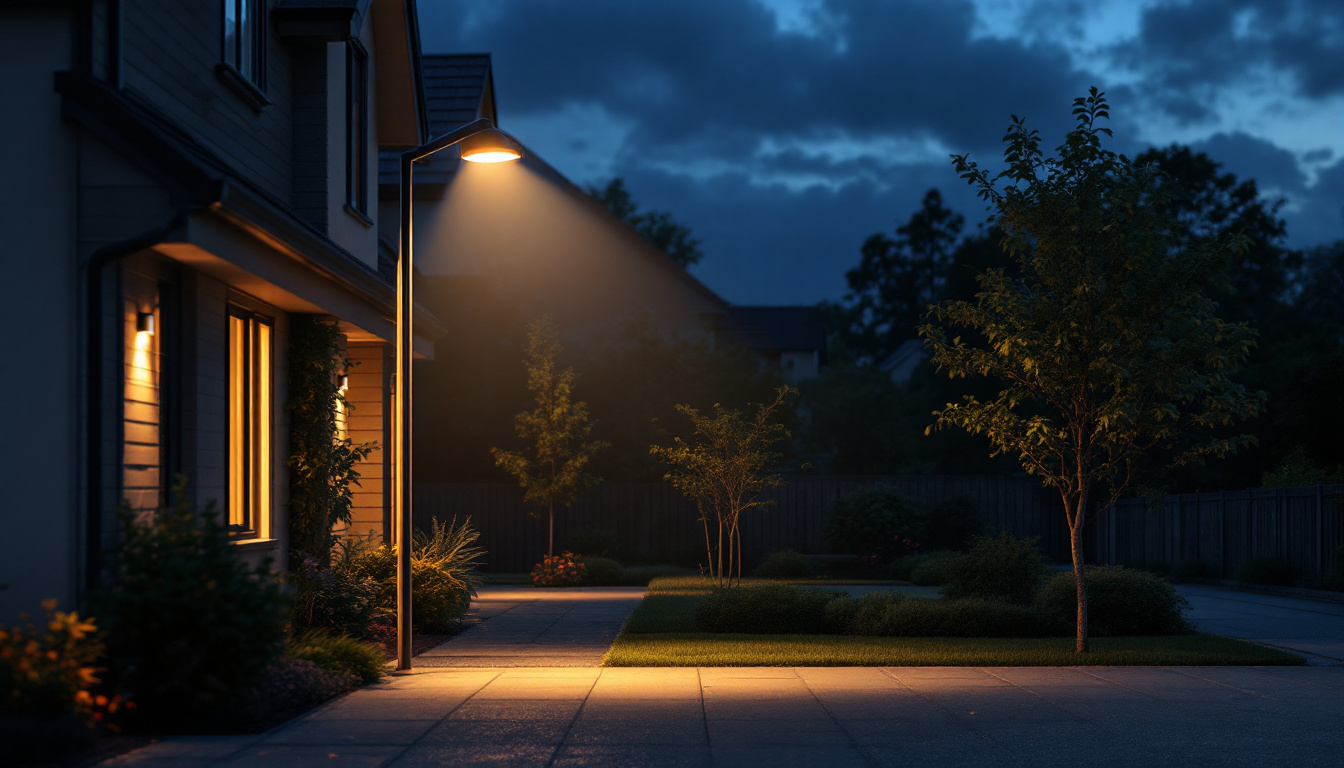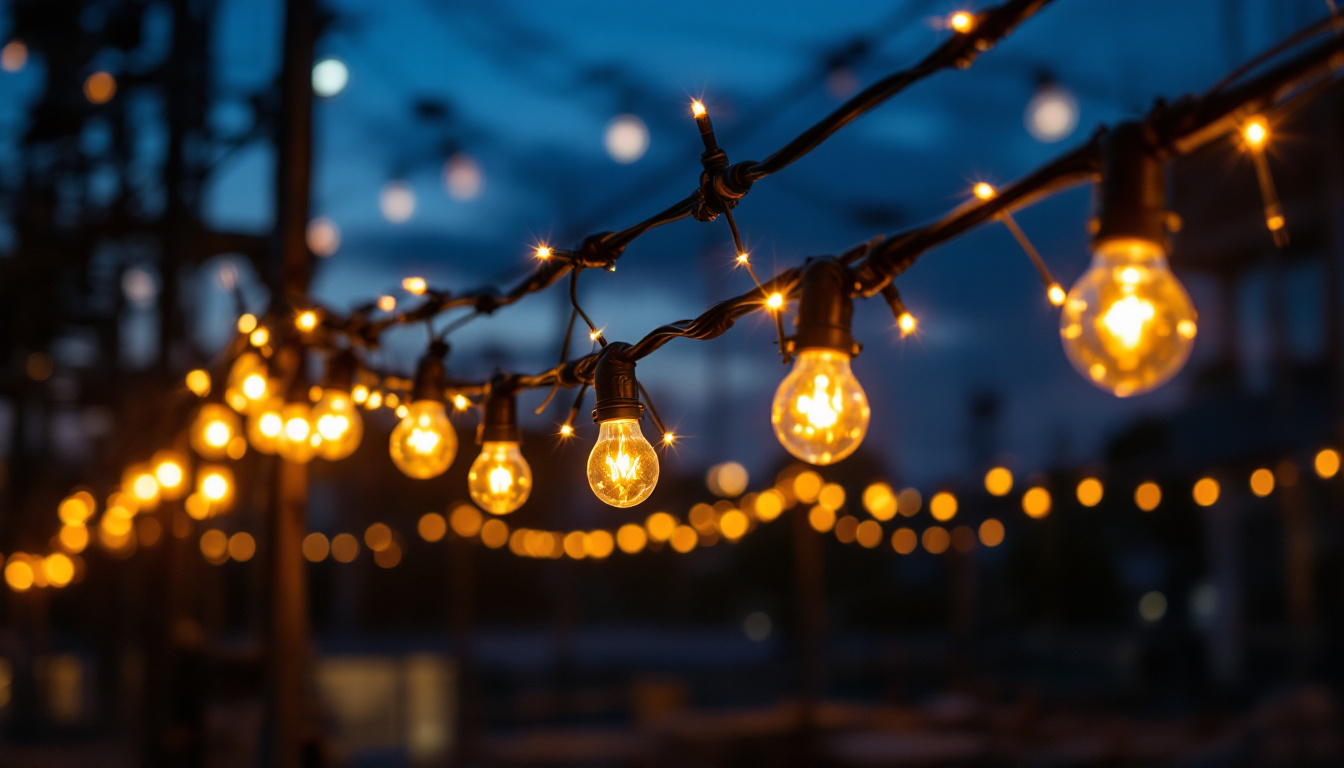
In the realm of outdoor security lighting, dusk to dawn lights have gained significant popularity among homeowners and businesses alike. These fixtures provide automatic illumination from sunset to sunrise, ensuring that properties remain well-lit during the hours of darkness. However, as lighting contractors evaluate the best options for their clients, it is essential to consider not only the benefits of dusk to dawn lights but also the alternatives available in the market. This article delves into the advantages and disadvantages of dusk to dawn security lights compared to other lighting solutions, providing insights to help contractors make informed choices.
Dusk to dawn security lights are designed with built-in sensors that detect ambient light levels. When the sun sets, these lights automatically turn on, providing consistent illumination throughout the night. As dawn approaches and natural light returns, the sensors deactivate the lights, conserving energy and extending the lifespan of the bulbs.
One of the primary advantages of dusk to dawn lights is their convenience. With automatic operation, homeowners and business owners do not need to worry about manually switching lights on and off. This feature is particularly beneficial for properties that may be unoccupied during the night, as it enhances security by creating the illusion of occupancy. By illuminating pathways, driveways, and entrances, these lights deter potential intruders and provide a safer environment for residents and visitors alike.
Moreover, dusk to dawn lights often come equipped with energy-efficient LED bulbs, which consume less power compared to traditional incandescent or halogen bulbs. This not only reduces energy costs but also minimizes the environmental impact, making them an attractive option for eco-conscious clients. Many models also offer adjustable brightness settings, allowing users to customize the level of illumination based on their specific needs, whether for security purposes or simply to enhance the ambiance of their outdoor spaces.
Despite their advantages, dusk to dawn lights are not without limitations. One notable concern is their reliance on sensors, which can sometimes malfunction due to dirt, debris, or extreme weather conditions. This may result in lights that do not operate as intended, leading to either unnecessary energy consumption or inadequate lighting. Regular maintenance, including cleaning the sensor and ensuring the fixture is free from obstructions, can help mitigate these issues, but it does require a commitment from the property owner.
Additionally, while LED technology has advanced significantly, the initial cost of dusk to dawn fixtures can be higher than other lighting options. For contractors working within strict budget constraints, this may pose a challenge when recommending solutions to clients. However, it is essential to consider the long-term savings on energy bills and bulb replacements, as these fixtures typically have a longer lifespan than their traditional counterparts. Furthermore, many manufacturers now offer warranty programs that can provide additional peace of mind regarding the investment in these lighting solutions.
While dusk to dawn lights are a popular choice, there are several alternatives that lighting contractors should consider. Each option comes with its own set of advantages and disadvantages, making it crucial to evaluate the specific needs of the project at hand.
motion sensor lights are another effective security lighting solution. These fixtures activate when they detect movement within a specified range, providing illumination only when necessary. This feature can lead to significant energy savings, as the lights are not on continuously throughout the night.
One of the main benefits of motion sensor lights is their ability to deter potential intruders. The sudden illumination triggered by movement can startle trespassers, making them think twice before approaching a property. This proactive approach to security is appealing to many clients. Additionally, many modern motion sensor lights come equipped with adjustable sensitivity settings, allowing homeowners to customize how they respond to movement. This flexibility can help reduce false alarms caused by pets or passing wildlife, ensuring that the system remains effective without becoming a nuisance.
timed lighting systems offer another alternative for outdoor security lighting. These systems can be programmed to turn on and off at specific times, providing a customizable solution for clients who want to control their lighting schedules. Timed systems are particularly useful for properties that have predictable occupancy patterns.
However, one downside of timed systems is their lack of adaptability. Unlike dusk to dawn lights, which automatically respond to changing light conditions, timed systems require manual adjustments to account for seasonal variations in daylight. This can be a drawback for clients who prefer a more hands-off approach to their outdoor lighting. To enhance their functionality, some timed systems can be integrated with smart home technology, allowing users to control their lighting remotely through a smartphone app. This added convenience can appeal to tech-savvy clients who appreciate the ability to monitor and adjust their lighting from anywhere.
Solar-powered lights have emerged as a popular alternative, particularly for environmentally conscious clients. These fixtures harness solar energy during the day and use it to power LED bulbs at night. The absence of electrical wiring makes solar lights easy to install, providing a hassle-free option for contractors.
However, the performance of solar-powered lights can be inconsistent, especially in regions with limited sunlight. They may not provide sufficient illumination during cloudy days or in winter months when daylight hours are shorter. Contractors should assess the geographical location and typical weather patterns before recommending solar lights. Furthermore, advancements in solar technology have led to the development of more efficient solar panels and batteries, which can store energy better and provide longer-lasting illumination. Some models even come with built-in motion sensors or timers, enhancing their functionality and making them a more viable option for a wider range of applications. This evolution in solar lighting technology is paving the way for more reliable and effective outdoor lighting solutions that align with sustainable practices.
When evaluating dusk to dawn lights against alternatives like motion sensor lights, timed systems, and solar-powered options, it is essential to consider several factors, including cost, energy efficiency, security effectiveness, and installation requirements.
Cost is often a primary concern for clients, and this is where dusk to dawn lights may face stiff competition from alternatives. While the initial investment for dusk to dawn fixtures can be higher, their long-term energy savings and low maintenance requirements may offset these costs over time. On the other hand, motion sensor lights and timed systems often come at a lower upfront cost but may require more frequent bulb replacements.
Energy efficiency is another critical factor in the decision-making process. Dusk to dawn lights equipped with LED technology offer significant energy savings compared to traditional bulbs. Motion sensor lights can also be energy-efficient, as they only illuminate when needed. Solar-powered lights, while eco-friendly, may not always provide reliable performance, especially in areas with limited sunlight.
In terms of security effectiveness, dusk to dawn lights provide continuous illumination, which can deter potential intruders. However, motion sensor lights may offer a more proactive approach by startling trespassers when they trigger the lights. Timed systems can create patterns of occupancy that may also deter crime, while solar-powered lights may lack the brightness needed for optimal security.
When deciding on the best lighting solution for clients, contractors should take into account several key factors. These considerations can help ensure that the chosen lighting system meets the specific needs and preferences of the property owner.
Understanding the preferences of clients is paramount. Some clients may prioritize energy efficiency and sustainability, making solar-powered lights an appealing option. Others may value security above all else, leading them to prefer dusk to dawn or motion sensor lights. Engaging in open discussions with clients can help contractors tailor their recommendations accordingly.
The characteristics of the property itself can also influence the choice of lighting solutions. For example, large outdoor spaces may benefit from the continuous illumination provided by dusk to dawn lights, while smaller areas might be adequately served by motion sensor lights. Additionally, the presence of trees or other obstructions can affect the effectiveness of solar-powered fixtures.
Finally, the ease of installation and maintenance should be considered. Dusk to dawn lights typically require professional installation, especially if they are hardwired. In contrast, solar-powered lights can often be installed by the homeowner, reducing labor costs. Contractors should weigh these factors when making recommendations to clients.
In the competitive landscape of outdoor security lighting, dusk to dawn lights offer a reliable and convenient solution, but they are not the only option available. By considering the benefits and drawbacks of alternatives such as motion sensor lights, timed systems, and solar-powered fixtures, lighting contractors can provide well-rounded recommendations tailored to their clients’ specific needs.
Ultimately, the choice between dusk to dawn security lights and their alternatives will depend on various factors, including cost, energy efficiency, security effectiveness, and the unique characteristics of each property. By taking a comprehensive approach to evaluating lighting solutions, contractors can ensure that they deliver the best possible outcomes for their clients, enhancing both security and satisfaction.
Ready to elevate your lighting solutions with the best value in the industry? Look no further than LumenWholesale. Our extensive selection of spec-grade lighting products is designed to meet your every need, ensuring you can offer clients reliable, high-performance options for their security lighting. Say goodbye to inflated markups and hello to unbeatable wholesale prices, free shipping, and the convenience of bulk buying. Don’t compromise on quality or affordability. Choose LumenWholesale for your next project and experience the perfect blend of quality, affordability, and convenience. Wholesale Lighting at the Best Value is just a click away.

Explore how LED base technology is revolutionizing the lighting industry and impacting contractors’ profits.

Discover how the innovative street lamp bulb is revolutionizing the lighting industry for contractors.

Discover how construction light strings can transform your lighting projects from ordinary to extraordinary.

Discover answers to common outdoor wall mount lighting questions from contractors, learn key installation tips, and enhance your outdoor spaces—boost safety and curb appeal today!.